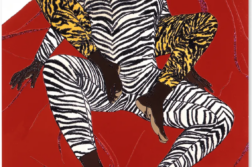 Arts and Letters
Arts and Letters
by Edmund White
Cleis Press. 360 pages, $24.95
ARTS AND LETTERS is a collection of previously published articles, essays, and book reviews, some of which were rewritten, reworked, or updated for this compilation. Published between the mid-1980’s and the late 1990’s, they originally appeared in sources such as the New York Times Book Review, Vanity Fair, Vogue, the New Yorker, Rolling Stone, and Savvy Woman.
The author being Edmund White, the writing is never less than captivating, even if a few of the articles are, as the British would say, potted history, about such notables as Oscar Wilde, Marcel Proust, André Gide, and other Usual Suspects. Even in those cases, there’s always something new for the reader to learn. (Gide spoke at Gorky’s funeral and was horrified by all the statues of Stalin, for example.) Some fascinating and lesser-known individuals—heterosexual and bisexual writers, artists, and personalities—are also included. That’s particularly the case with Knut Hamsun, the Norwegian novelist who won the Nobel Prize for literature in 1920. White says that Hamsun is one of his favorite novelists, and in a few pages paints a fascinating picture of this dreadful man, whose Nazi sympathies White was unaware of until reading a recent biography. “I admit that I became so disgusted by the great writer that his excellence as an artist suddenly seemed trivial, even irrelevant. … People who are indifferent to art have no problem dismissing [such artists]out of hand. Æsthetes without a conscience enjoy them without a second thought. The rest of us have to face the unresolvable paradox that these key figures in 20th-century literature are morally intolerable and artistically indispensable.”
At the other end of the spectrum was the late Joe Brainard, who was the Joffrey Ballet’s costume and set designer, a book cover designer, a collagist, and prolific collaborator with many poets such as Frank O’Hara and Edwin Denby, both profiled in Arts and Letters. White calls him “unworldly and Christlike. Joe was the only person I’ve ever known whom I’d try to talk and act like when I was with him.” The essay, which was printed in Art in America in 1997, doesn’t really explain what went into making Brainard such an iconic figure—other than his generosity of both spirit and pocketbook—but it certainly makes one want to read the new biography by Ron Padgett, Joe: A Memoir of Joe Brainard (Coffee House Press, 2004).
Of the late Bruce Chatwin, the married and heavily closeted British travel writer, who favorably compared Hemingway’s style to that of Ronald Firbank (“Hemingway was actually the most refined stylist, [and had]the most delicate sensibility of the century”), White writes: “Hemingway he [Chatwin] thoroughly liked for his writing, at once dandified and pared back, half Gertrude Stein and half code civil, as well as for his alternating bouts of heroism and cowardice. … Marjorie Garber [is]championing Hemingway as the great androgyne, especially in his posthumous, exquisitely written and dizzyingly bisexual The Garden of Eden.”
White’s 1994 collection of essays, The Burning Library, which was edited by this journal’s poetry editor, David Bergman, covers some of the same subjects (mid-20th-century gay writers and artists like Coleman Dowell, Christopher Isherwood, Michel Foucault, and Robert Mapplethorpe), as the new collection, but were reprinted from a much broader range of publications, from the 1970’s and 1980’s, and seemed to be more full of zest than the current compilation. For unapologetic fans of Edmund White, however, this new compilation will be far from disappointing.






